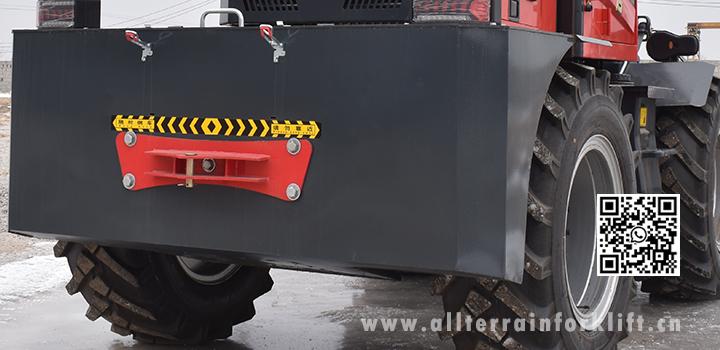The tonnage configuration of a forklift, with the front wheel position as the center pivot point, refers to the counterweight at the rear, also known as the rear counterweight. This weight configuration determines the forklift's tonnage, lifting capacity, and balance. However, attention must be paid to the following considerations:
Selection and Installation:
In general, the layout of the vehicle determines the balance weight, center of gravity, and rear suspension. When fully loaded, the selection of counterweight primarily considers vertical stability. The quality of the counterweight directly affects the safety factor of the forklift's front-to-rear balance, making it a critical parameter in determining the forklift's safety factor. When calculating the total mass (g) of the counterweight, the installation dimensions can be determined based on the assembly shape of the counterweight on the frame relative to the rear axle's center. Two inverted V-shaped brackets on the upper outer side of the forklift's rear frame allow the counterweight to be secured with two bolts.
Ventilation Holes:
Thermal balance is a crucial parameter for forklifts. If insufficient cooling occurs, the engine's coolant temperature may rise excessively, impacting the forklift's performance. Therefore, the positioning of counterweight holes, ventilation ducts, and airflow guides is vital. Generally, higher ventilation ports result in better heat dissipation. A circular transition between ventilation ports and radiators is ideal for directing airflow, enhancing heat dissipation efficiency.
Departure Angle:
The starting angle at the bottom of the counterweight is also significant. This angle is primarily to prevent friction between the counterweight's bottom edge and the ground during upward and downward movements. The starting angle theoretically equals the maximum ascent angle for a specific forklift model. The dividing point of the counterweight's bottom edge should be determined based on the specific model's maximum tilt angle and the rear overhang on the counterweight.


